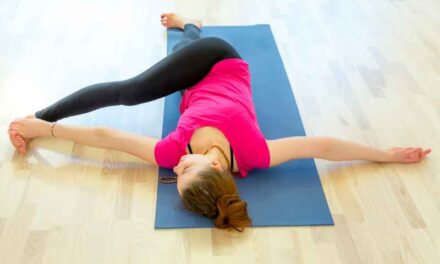Hatha yoga
Which deals mostly with body and breathing exercises that help the student become aware of his or her internal states. Hatha yoga exercises help to make the body a healthy and strong resource for the student.
Karma yoga
The yoga of action. This path teaches us to do our duties in life skillfully and selflessly, dedicating the results of our actions to humanity. Practicing this aspect of yoga helps us to live unselfishly and successfully in the world without being burdened or distressed.
Jnana yoga
The path of knowledge and wisdom. This path involves intense mental discipline. Knowledge dawns as we learn to discriminate between the real and the unreal, between the transient and the everlasting, between the finite and the infinite. This path is meant for only a fortunate few who are aware of the higher and subtler realities of life.
Bhakti yoga
The yoga of devotion. This path is the way of love and devotion. It is the path of self-surrender, of devoting and dedicating all human resources to attaining the ultimate reality.
Kundalini yoga
Which is a highly technical science. The guidance of a competent teacher is required to learn methods for awakening the serpentlike vital force that remains dormant and asleep in every human body.
Mantra yoga
Which involves meditation and the use of certain sounds called mantras. These mantras were discovered in deep meditation by highly advanced sages and teachers. They are traditionally transmitted to students and are used as objects of concentration. Mantras help students with self-purification, concentration, and meditation.
Raja yoga
The “royal path,” is very scientific and thorough. By following this path methodically, we learn to refine our desires, emotions, and thoughts, as well as the subtle impressions and thoughts that lie dormant in the unconscious mind.
Raja yoga helps us to experience the inner reality by means of an eight-runged “ladder,” or eight steps. The ultimate goal is for the aspirant to attain the eighth rung, samadhi. The 7th rung on the raja yoga ladder is dhyana or contemplation.
Meditation is the product of unbroken, continuous focus. Concentration renders the mind one-pointed, serene and quiet. Meditation further stretches the one-pointed thinking into the condition of super consciousness.
Meditation is the continuous movement of the mind against one entity or idea, and when the mind extends across its conscious and subconscious stages and follows this superconscious activity, then unconscious awareness dawns. All yoga practices allow one to eventually achieve this stage of contemplation and thus attain harmony, happiness, and tranquility.
The first five outward phases of hatha yoga train the student for the final three internal raja yoga activities. Those are Dharana, dhyana, and samadhi, these are more specifically based on mind management. The visual sensations confuse the subconscious as it is aware of the serenity inside.
Therefore, practicing Dharana, or focus, is useful as the sixth stage in raja yoga. Through concentrating, the mind’s distributed force is organized and concentrated through a sustained voluntary emphasis on an object. It includes the desire to make a concerted attempt, which is built by regular practice. A fragmented, frail mind becomes concentrated and made more effective by attention.
Meditation may be really effective in eliminating physical and psychological issues of our everyday lives. In reality, many of the disorders we encounter derive either explicitly or indirectly from disputes, suppression, or mental pain that occur in the conscious or unconscious mind.
Meditation allows one to become mindful of and overcome these problems, and to create harmony and tranquillity. In this sense, meditation is an important tool for overcoming everyday challenges.
When we also understand how we study in the western world, so we know that our schooling is one-sided and superficial given all our focus on knowledge. We can learn to memorize statistics and data, but we do not learn how to grasp our own inner existence and grow it.
The thoughts stay fragmented, and the feelings exist as opposing, destructive powers. We will access only a limited portion of our intellectual ability as we are filled with uncertainty, anxiety, and inner conflict.
Meditation helps us transcend these limitations; it allows us to become aware of the more latent and constructive forces inside. We are being innovative and versatile in acquiring that knowledge. These abilities as empathy, which others find uncommon or exceptional, are in reality beyond the capacity of all meditating human beings. These talents are open to any who allow in-between communication with the deeper facets.
The prolonged and deep practice contributes to the final phase in raja yoga — the samadhi state, the state in superconsciousness. We become one with the higher Self in this world and overcome all imperfections and limitations. The samadhi condition is the fourth level of consciousness, transcending the three natural awake, dreaming, and dreamless sleep patterns.
An individual who achieves samadhi would become a gift to society. If mankind is going to achieve a more advanced society, that can only be feasible as a consequence of our development and transformation as humans. An individual who is founded in samadhi lives his entire existence as a spontaneous expression of the supreme consciousness ‘unimpeded flow.
This superconscious dimension is our human essence; it is fundamental and transcends all ethnic, religious, class, or age divisions. As we are conscious because of this environment, our whole life is changed. We also change our cultures and all human culture as we turn ourselves and achieve serenity, harmony, and equality. Such knowledge of the universal consciousness is the true and realistic purpose of yoga.






